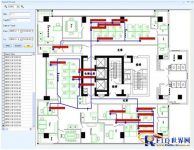
Active RFID smart documents were successfully applied in the headquarters of Citibank
[ad_1]
1. Implementation background
Citibank is a leader in the financial and banking industry. More than 300 financial elites in the headquarters call 800 to 1,000 documents a day on average. It is indeed time-consuming and inefficient to find documents in the office for various projects. In the face of the truth that time is money, the salary of an ordinary document administrator is about HK$18,000~30,000, and there are a total of 5 administrators. Every year, the bank has to spend hundreds of thousands or even millions of manpower for the document management library; The hidden costs of higher-manpower employees in the sales department, financial analysis department, and accounting department are astronomical. In the fiercely competitive banking market, they have to publicize their troubles of finding documents, hoping that technology companies can blaze a trail for them.
Baorong Yingfeng (Bisha) Technology conducted an in-depth analysis and summarized the four major nodes of the process as follows:
(1) The data management room cannot track the employee’s location where the document is borrowed. The data management room only registers the records of the employees who go to the library to borrow and return files. However, the records of the documents borrowed between employees for the second time cannot be updated in real time, and there is an information blind spot when querying. Administrators or employees can only notify by OA mail to find files.
(2) The data management room faces the workload of entering massive borrowing records every day. Manual input is prone to input errors. There is a lag in the input information, and the use value of retrieval is greatly reduced.
(3) When employees are on vacation or going out on business, all documents must be locked in drawers. The bank headquarters requires employees to put documents in file cabinets when they go out or after get off work, and they must be closed and locked. Each employee stores 3 to 6 file cabinets. However, the storage location of all documents cannot be confirmed. Even if other employees obtain the permission of superiors to take out the documents, they still need to spend time searching for the documents.
(4) The document is often lost after a long period of time before searching for it again. However, it is impossible to find out which part of the second borrowing, including the information, time, and location of the employee.
2. SmartFile stands out and becomes Citibank’s application solution
Original technology application: Citibank originally adopted the most traditional bar code file management method, pasting a two-dimensional bar code on each 3.5-inch hardware folder. Then use Symbol’s handheld barcode scanner to scan the ID one to one. The employee’s input information is HF employee card input. In this way, the borrowed and returned documents and the employee’s information are associated.
Although the cost of passive document management is low, it cannot solve the fundamental problem of banks’ real-time document location and all-day inventory.
The SmartFile solution developed by Baorong Yingfeng (Bisha) Technology is to use 2.4GHz RFID technology to carry out a large-scale omnidirectional 24hrs inventory and monitoring. Use the active function, integrate sound and light prompts on the label, integrate the label with the file, and make it easy to find. In the actual test, the document is placed in a metal cabinet or a safe, and it can also be successfully called by the reader’s command and respond with voice. The indoor positioning function is very suitable for large-scale office applications. The software can see the accurate display of the lane trajectory, and the positioning accuracy is as high as 3 to 5 meters. The trouble of missing documents in the past is wiped out.

Highlights of this application case
From the start of the system to the present, Citibank’s application of Smartfile has increased the time it takes to successfully retrieve documents from an average of 35 minutes per day to 3 minutes, and the sales staff’s work efficiency has been greatly improved. It only takes 30 minutes for the data room administrators to carry out document inventory every day, including the trouble shooting of document abnormalities. There are three data room administrators, which is enough to handle the management workload of more than 300 employees and tens of thousands of documents.
Innovation and change
The Citibank document handover process has changed from the original paper signature to the automatic recording of system positioning.
The data room administrator changed from scanning the original barcode and manually sorting it to one-click access to document usage reports.
OA mail notifies the change of borrowed documents, directly calls the Smartfile database, and completes the borrowing of documents in 3 minutes.
Users have been fully affirmed and satisfied with the performance of active RFID after long-term use. The emergence of Smartfile has allowed active RFID technology to bring a whirlwind revolution to the application of document management.
[ad_2]




